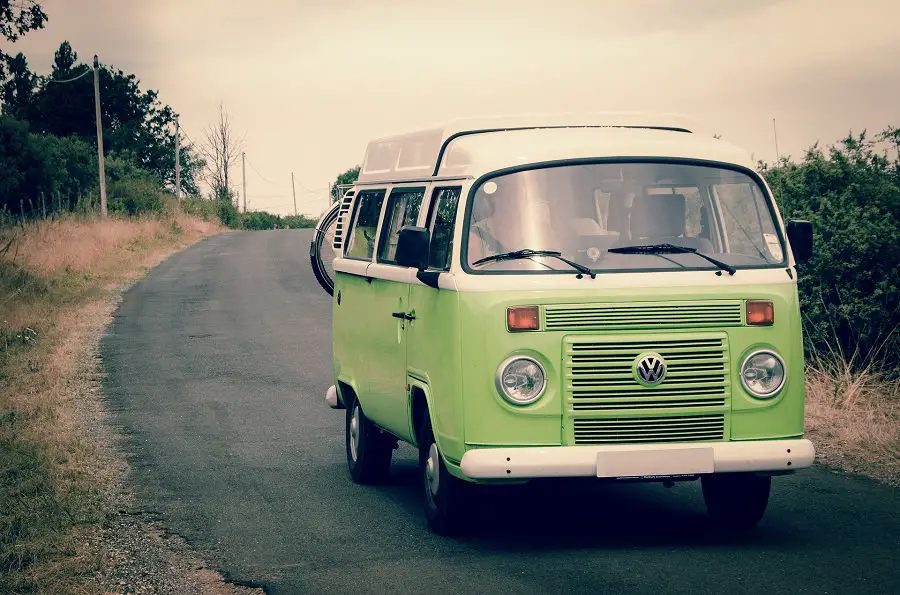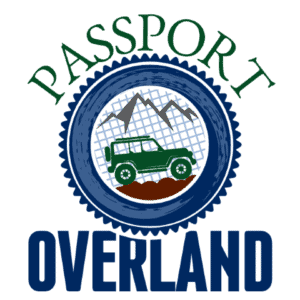
If you’ve ever looked at the route map of an overland adventure, chances are you saw a path dotted with gas station stops all along the way. This is partly due to logistics and planning but also because our vehicles are limited by their range.
Overland travel often means lots of space on roads that won’t get us there on electric power only even if we wanted to. Mechanical transportation on land has been around for over 100 years now. It’s hard not to compare it with other established technologies when faced with finding the next vehicle for your expedition tour.
Four Examples of Alternative Overlanding Vehicles
We may look at these examples as somewhat quirky, but remember that everyone has their own idea of adventure and how to experience it. Let’s take a quick look at alternative overlanding vehicles.
- The Ever Popular Van…think of Van Life
- Ooh, the expansive Bus conversion
- Fairly new to the game, the Ambulance
- And the old standby Recreational Vehicle, or RV.
Deeper Look at Alternative Overlanding Vehicles
There are many types of overlanding people, and there are people who use alternative vehicles. These include those who use a car, a truck and those who utilize an SUV. Each option has its respective pros and cons. Which works best for you depends on what you have to work with or want to do.
While trucks tend to be the most popular choice for alternative overlanding vehicles, they aren’t always the best option for everyone. In this article, we’ll discuss some of the benefits of other often overlooked choices as well as some disadvantages that may make trucks better options in certain situations.
Vans
The first is by far one of the least popular options. Vans can make great additions to any expedition rig collection if they’re appropriately modified. Unlike most vehicles, they feature tall roofs, large windows, and lots of interior space. All of these attributes make them exceptionally well suited to overlanding duty.
Their tall ceilings mean that they can handle higher clearance components more easily than most other vehicles on the market. This means you can fit larger tires for improved off-road capabilities and gain ground clearance up front for increased approach angles.
They also have a lot of room inside, making setting up camp easy since you don’t have to climb in constantly and out of the vehicle throughout the night, trying not to trip over anything or anyone else who’s sleeping next to you.
On top of all that, their body design features large flat surfaces making it easier than most other types of vehicles to mount equipment like solar panels on top.
Buses
The second type of alternative overlanding vehicle is the bus. Buses are more commonly used in some parts of Europe for their camping advantages, but they can work well in North America if you find the right one. They feature similar benefits to vans, including large windows, tall ceilings, and lots of interior space.
The main difference is that they tend to be more expensive than your average van since there aren’t as many of them on the market annually, making them harder to come by.
Their larger size also makes them slightly less maneuverable off-road than smaller vehicles which can sometimes put you or others traveling with you at greater risk for accidents while driving around tight trails at speed. However, it still maintains superior abilities over all other types of vehicles.
Ambulance
The third type of overlanding vehicle is the ambulance. These provide some advantages and disadvantages as well. In many countries, you can find old ambulances for sale at a reasonable price, making them an excellent option for those on a budget.
Their spacious interior gives plenty of room to sleep in or camp out if you need to spend time outdoors waiting on help from whatever situation you are stuck in. The downside is this large space comes at a cost.
Ambulances are inherently less off-road capable than trucks even though they’re able to drive through pretty much anything without too much difficulty since their chassis’ were explicitly designed with that ability in mind.
Many ambulance models also lack high ground clearance and approach angles, making driving down challenging trails extremely difficult without the right equipment.
RVs (Campers)
The fourth type of alternative overlanding vehicle is unlike all the other options mentioned so far, and it’s not a “vehicle” at all. These are RVs, also known as campers.
The advantages to utilizing an RV for alternative overlanding purposes include:
- Lots of available space to live in.
- Lots of space to store extra gear.
- Generally speaking, most are very easy vehicles to drive due to their high clearance chassis’. This makes them much safer when traveling at higher speeds off-road than other vehicles created primarily with on-road use in mind.
The downside is they tend to be more expensive than vans or cars since there aren’t many used ones sold each year, and they’re much harder to find. They also tend to have a lot of quirks that can make them frustrating, which is usually the result of their intended purpose being for comfortable on-road travel rather than serious off-roading.
Disadvantages of Alternative Overlanding Vehicles
The disadvantages to each type of vehicle listed above are based primarily on their intended use. Not having the right equipment installed or knowing how to drive them in challenging conditions properly can turn even the most capable overlanding vehicles into death traps if you don’t know what you’re doing.
If your set out looking for an overlanding vehicle and aren’t sure where to start, then think about what kind of driving and camping experiences you want and need while spending time away from civilization.
Some people only plan to travel short distances off-road to reach their destination, while others plan to spend weeks or even months off-road in challenging conditions. Whatever you choose, remember that having the right vehicle for your needs is crucial to your safety and comfort away from home, so do your research before purchasing.
Excerpt From a Friends’ Alternative Overlanding Experience
I’ll start with my personal experience and a couple of shots I took on the weekend at the Bus & Car Show in Warsaw. There we saw some vintage, mostly pre-war cars, and buses. Some restored, others not so much that people could still commute to work in them if they wanted to.
Not sure how well it would work out but let’s just say that seeing such an old technology back again made me think about trying this for myself someday, just because it seems like such a great idea to drive one of these things instead.
I don’t know about you, but whenever I pass by a massive vehicle like a bus or truck and see someone driving it (not the guy who cleans the windshield), it always seems more relaxed than most people you see behind the wheel of a car.
Maybe it’s because buses and trucks are built big with a lot of attention to safety. They have to be – but whatever the reason is, I figure that driving an overlanding vehicle like this would feel as relaxed as having a conversation with your passengers on board.
Of course, I’m not only talking about buses and trucks here. There’s what seems to be a whole industry of different types of vehicles for people with similar tastes. Just think about campervans, ambulances, hearses, school buses, and even double-decker trains.
The Bottom Line
So, are alternative overlanding vehicles better? The answer is no.
Just because you can do something doesn’t mean that you should. Overlanding is the act of traveling through remote areas without support. Most overlanders use 4×4 pick-up trucks with roof-mounted rooftop tents and large spares, such as full-size spare tires or tire repair kits.
Others choose smaller SUVs with larger fuel economies and lower centers of gravity. This is often coupled with a rooftop tent and spares. Yet others prefer hard-bodied pop-top vans (like VW Westfalias), flat bodies, and small car campers on small trailers – all of which are towable behind most overlanding vehicles.
Each has its benefits and drawbacks. Which is best for you is largely a function of what type of overlanding you plan to do, your budget, and your preferences.
It Comes Down to Personal Choice
The problem with alternative overlanding vehicles like ambulances, buses, and vans is that most alternative overlanding vehicle users think they’re overlanders when in fact, they haven’t got a clue what true overlanding is about – despite their claims!
It’s not my place to judge the merits or abilities of these travelers: everyone does what’s right for them based on their personal guides and moral codes.
Overlanding, a Rant of Sorts
However, if someone chooses an inconvenient “alternative” method of travel without truly knowing why they are doing so – like towing a huge bus behind their Land Cruiser full of stuff – they are not overlanding.
People who try to convince others that using alternative overlanding vehicles is superior to standard rooftop camping rigs, or that true overlanders use minivans and RVs because it’s the “first rule of overlapping” (whatever that means), are either misguided themselves or trying to lead others astray for their gain (like in selling them something).
So why do so many alternative overlanding vehicle owners claim they’re doing overlanding when in fact, they aren’t? I find it happens when you look at what most people do on road trips: drive from point A to B in comfort with good weather, a full fuel tank, and your favorite tunes playing.
Many people just want to go from A to B in comfort, then call it overlanding when adding a rooftop tent and larger spares to their vehicle.
It’s just marketing – but is it good marketing? In my opinion, no. However comfortable your camping setup is or how many toys you have on-board, if you don’t honestly know the meaning of overlanding before going out there in an alternative overlanding vehicle, chances are anything beyond a dirt road will beat you up pretty bad – especially when it comes time to leave!
I hope this helps clarify why I believe true overlanders should stick with pick-ups (like Toyota Tacoma) instead of minivans, RVs, or alternative overlanding vehicles. This is not a judgment on what anyone chooses to do – it’s just my take on the subject.

